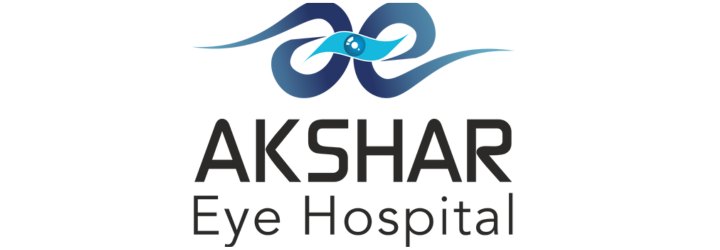- Email: Akshareye22@gmail.com
- 241, Royal Arcade, Sarthana Jakatnaka, Surat-395006
- Call: 8866342242
Surgery for Spectacle Removal (C-LASIK, Blade-Free LASIK, ICL)
- Home
- Surgery for Spectacle Removal (C-LASIK, Blade free LASIK, ICL)
- Computerised Eye Testing
- Stitchless Phaco Cataract Surgery (MICS) with Premium IOL
- Surgery for Spectacle Removal (C-LASIK, Blade free LASIK, ICL)
- Eyelid Surgery
- Dry Eye Management
- Keratoconus Management (CXL, Contact Lens)
- Diabetic Retinopathy Treatment
- Glaucoma Diagnosis and Treatment
- Treatment of Blocked NLD
- Pteygium surgery using advanced fibrin glue
- Punctal plug placement for DRY eye
- Probing for watering in neonat
Surgery for Spectacle Removal (C-LASIK, Blade free LASIK, ICL)

Introduction: Refractive surgeries such as C-LASIK, Blade-Free LASIK, and Implantable Collamer Lens (ICL) provide solutions for those looking to reduce or eliminate their dependence on glasses or contact lenses by correcting vision issues.
Symptoms: Candidates for these surgeries often experience symptoms like nearsightedness, farsightedness, or astigmatism, leading to blurry vision and reliance on corrective eyewear.
Causes: These refractive errors are usually caused by an irregular shape of the cornea or lens, which affects how light is focused on the retina.
Treatment: C-LASIK: This involves creating a thin flap in the cornea with a laser, then reshaping the underlying corneal tissue to correct vision.Blade-Free LASIK: Uses a femtosecond laser to create the corneal flap, eliminating the need for a mechanical blade and offering enhanced precision.
Akshar Eye Hospital
- Computerised Eye Testing
- Stitchless Phaco Cataract Surgery (MICS) with Premium IOL
- Surgery for Spectacle Removal (C-LASIK, Blade free LASIK, ICL)
- Eyelid Surgery
- Dry Eye Management
- Keratoconus Management (CXL, Contact Lens)
- Diabetic Retinopathy Treatment
- Glaucoma Diagnosis and Treatment
- Treatment of Blocked NLD
- Pteygium surgery using advanced fibrin glue
- Punctal plug placement for DRY eye
- Probing for watering in neonat
Surgery for Spectacle Removal (C-LASIK, Blade free LASIK, ICL)

Introduction: Refractive surgeries such as C-LASIK, Blade-Free LASIK, and Implantable Collamer Lens (ICL) provide solutions for those looking to reduce or eliminate their dependence on glasses or contact lenses by correcting vision issues.
Symptoms: Candidates for these surgeries often experience symptoms like nearsightedness, farsightedness, or astigmatism, leading to blurry vision and reliance on corrective eyewear.
Causes: These refractive errors are usually caused by an irregular shape of the cornea or lens, which affects how light is focused on the retina.
Treatment: C-LASIK: This involves creating a thin flap in the cornea with a laser, then reshaping the underlying corneal tissue to correct vision.Blade-Free LASIK: Uses a femtosecond laser to create the corneal flap, eliminating the need for a mechanical blade and offering enhanced precision.
